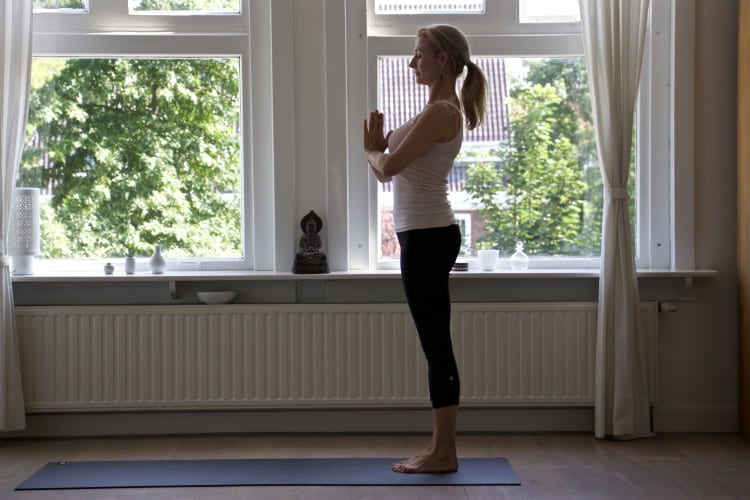Q&A
“How can I make my mind quiet?”
That is a very hard question to answer! The latest in Information Theory suggests we have approximately 100 billion cells in the brain, each with connections to thousands of other brain cells. Equipped with this many processors, the brain might be capable of executing as many as 100 billion operations per second, a truly impressive number.
It is often assumed that consciousness is the dominant feature of the brain. However, it now appears that the vast majority of processing is accomplished outside conscious notice and that most of the body’s activities take place outside our direct conscious control. This means practice and habit are important because they help train your brain to carry out some actions “automatically,” without your conscious interference. Even such a “simple” activity as walking is best done without interference from your consciousness, which does not have enough information processing capability to keep up with the demands of this task.

All of this is a complex series of operations. Knowing this, it seems a bit unrealistic to aim for a totally quiet mind. And actually, that unsettling feeling is not so much because your mind is busy, but because it is going in too many directions at once. The goal should not be to quiet the mind, but rather to focus those thoughts. By this, I mean to consciously direct your attention toward one specific point, continuously bringing your mind back to that chosen point as it drifts away. This is the basis of meditation.
I quite like the Dalai Lama’s analogy about how everyone is in a hurry to attain a state of high meditation, which he compares to trying to build a house from the roof. Actually, the foundation must first be built, which means getting your hands “dirty” and working from the ground. This is achieved by building from your base—which is your physical body. The physical practice of yoga enables you to focus your mind on specific tasks in the shape of “asanas” or physical poses, and trying to move with full consciousness. For example, when practicing such a simple position as Tadasana, or standing pose, you aim to focus your attention on to the soles of your feet, rooted on the ground; the caps of your knees unlocked, slightly soft at the back; the buttocks strong; the abdomen engaged (but not fully contracted); the ribs spreading sideways and oscillating with each breath; and the palms of the hands pressing gently but firmly against each other, with the thumbs touching the centre of your chest. The chest is slightly uplifted without effort or tension, the chin tucked in without force, your eyes and face soft, the top of the head rising up toward the sky. These are the physical details to focus your attention on, then there is the larger, more diffuse focus on a sense of your body as the connection between earth and heaven (or the ground and the sky above, if you prefer).
Try to fully take on the task of Tadasana as described above, and most probably during that time you have not been thinking of your to-do list. Your mind has not been quiet as such, but it has been focused on a series of challenges that bring you down to your foundation, away from your head and its circular thought processes.
This is just one small example. If you want to integrate this into your life, you have to practice. This is the only way for a focused mind to become a habit. But mechanical repetition will not suffice. You must practice with intent and concentration, what we call a “deliberate practice”: actively building, modifying and learning as you go. Ideally for much of this process you work with an experienced guide, but your own will power should carry you through.
Please remember however that as much as you might want an active solution to your busy mind, the positive benefits of physical movements and deliberate practice are only consolidated when you take sufficient time to rest; taking a moment to breathe quietly between active poses, finding a space to rest or sleep during the day when you need it, sitting on your own in a beautiful setting…don’t be afraid of those moments. If your yoga practice is conscious and truly intentional, in time, those moments will become restful and even peaceful.
This might not be the highest meditative state that you can achieve, but it will be a quiet beginning.
This is just one small example. If you want to integrate this into your life, you have to practice. This is the only way for a focused mind to become a habit. But mechanical repetition will not suffice. You must practice with intent and concentration, what we call a “deliberate practice”: actively building, modifying and learning as you go. Ideally for much of this process you work with an experienced guide, but your own will power should carry you through. Please remember however that as much as you might want an active solution to your busy mind, the positive benefits of physical movements and deliberate practice are only consolidated when you take sufficient time to rest; taking a moment to breathe quietly between active poses, finding a space to rest or sleep during the day when you need it, sitting on your own in a beautiful setting…don’t be afraid of those moments. If your yoga practice is conscious and truly intentional, in time, those moments will become restful and even peaceful. This might not be the highest meditative state that you can achieve, but it will be a quiet beginning.



Leave a Reply